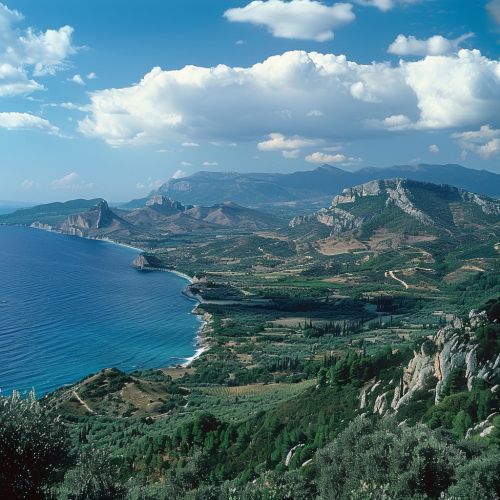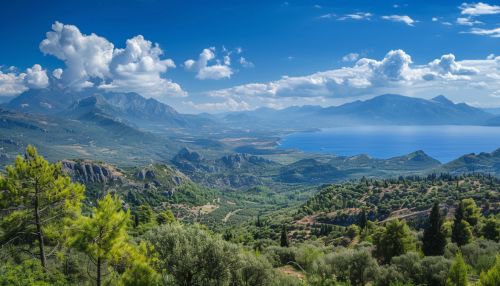Epirus
Geography
Epirus is a geographical and historical region in southeastern Europe, shared between Greece and Albania. It lies between the Pindus Mountains to the east and the Ionian Sea to the west. The largest city in Epirus is Ioannina, with other significant cities including Arta, Preveza, and Igoumenitsa in Greece, and Gjirokastër, Sarandë, and Berat in Albania.


History
Epirus has been inhabited since at least the Paleolithic era, with numerous archaeological sites dating back to this period. The region was part of the ancient Greek world, and was home to the Molossian and Chaonian tribes, among others. The most famous historical figure from Epirus is Pyrrhus of Epirus, a king who fought Rome in the Pyrrhic War.
In the Middle Ages, Epirus was part of the Byzantine Empire, and later the Ottoman Empire. The region played a significant role in the Greek War of Independence in the 19th century, and was incorporated into modern Greece in the early 20th century. The northern part of Epirus is today part of Albania.
Culture
Epirus is known for its unique cultural traditions, including its music, dance, and cuisine. The region's music is characterized by the use of the clarinet, the violin, and the lute, and is often accompanied by traditional dances such as the syrtos and the pogonisios. Epirus is also famous for its distinctive cuisine, which includes dishes such as pita pies, feta cheese, and tsipouro, a traditional Greek spirit.
Economy
The economy of Epirus is primarily based on agriculture, with significant production of wheat, corn, and olives. The region is also known for its livestock farming, particularly sheep and goats, and for its dairy products. In addition to agriculture, tourism plays an important role in the economy of Epirus, with visitors attracted by the region's natural beauty, historical sites, and cultural traditions.
